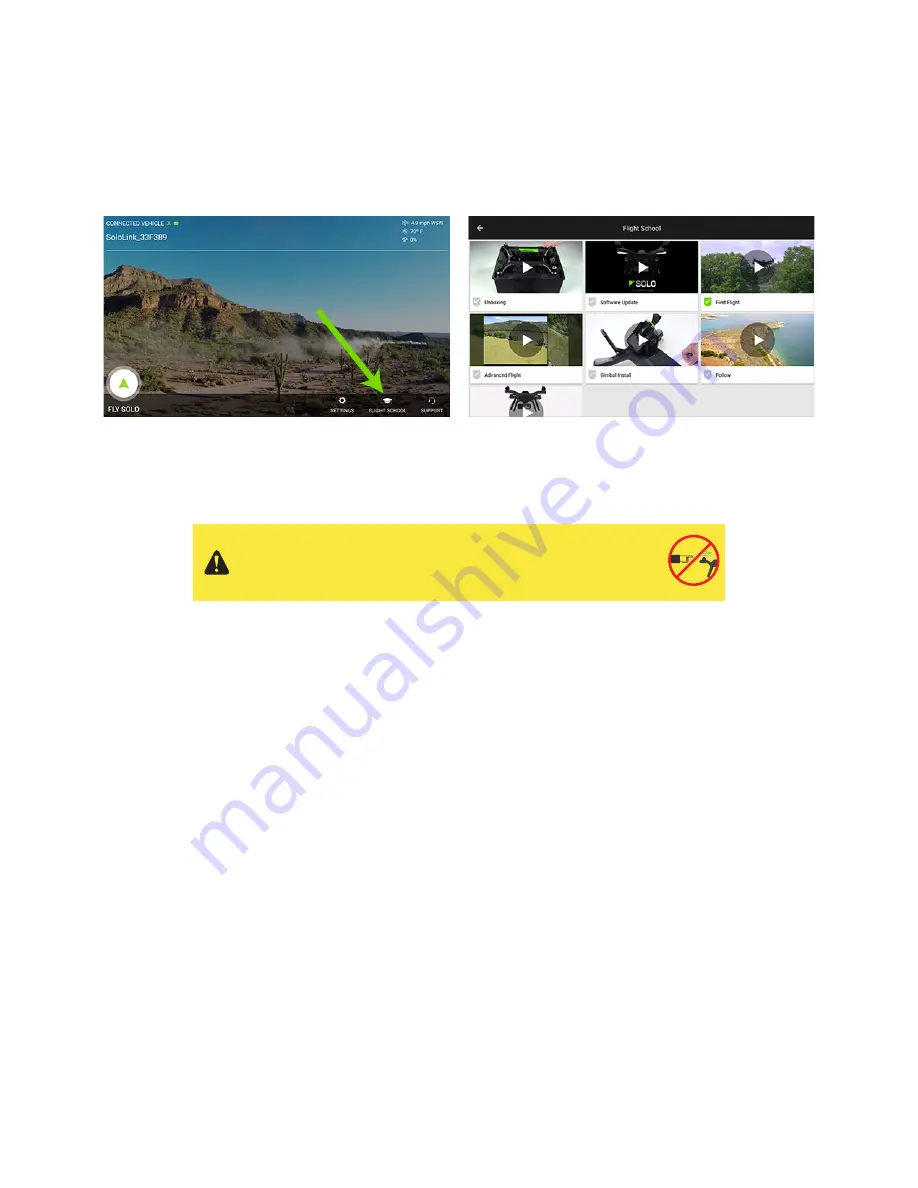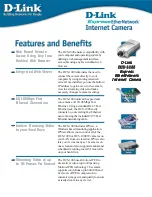
26
4.4 Flight School
If you’re new to flying, review the video tutorials in the Flight School area of the App before your first flight (make
sure your device is connected to the Internet). Flight School provides useful tips for learning to operate Solo safely
and correctly.
Figure 4.4.1: App Flight School
4.5 Propellers
To avoid hazardous contact with Solo’s high-speed propellers, always power off Solo before handling Solo or
the propellers. When prompted to start motors before takeoff, always ensure that the propellers are clear of any
obstructions and at least 20 feet away from any people, animals, or property before activating. Do not touch moving
propellers or approach Solo while the propellers are spinning.
After landing or returning home, Solo automatically detects the landing and stops the motors. Do not approach Solo
until the propellers stop spinning, and always power off Solo before picking it up.
4.6 GPS
Solo requires an active GPS signal for flight. After powering on, Solo can take up to five minutes to acquire a strong
GPS lock. Always choose a flying location with a clear view of the sky to improve GPS signal strength. The following
requirements define a GPS lock:
• Reported horizontal position accuracy
< 16 ft. (5 m)
• Reported speed accuracy
< 2 mph (1 m/s)
• Number
of
satellites
≥
6
• Difference between GPS and inertial navigation vertical velocity
< 2 mph (1 m/s)
If satellite coverage drops beneath a reliable threshold during flight, Solo will automatically switch to Fly:Manual
mode. This mode does not provide the flight-stabilizing GPS functionality, but it still lets you control Solo.
Spinning propellers can cause serious injury.
Never touch moving
propellers or place any objects in the way of the propeller arcs while
Solo is powered.
400 ft
400 ft
Summary of Contents for Solo
Page 1: ...User Manual ...
Page 81: ......
















































